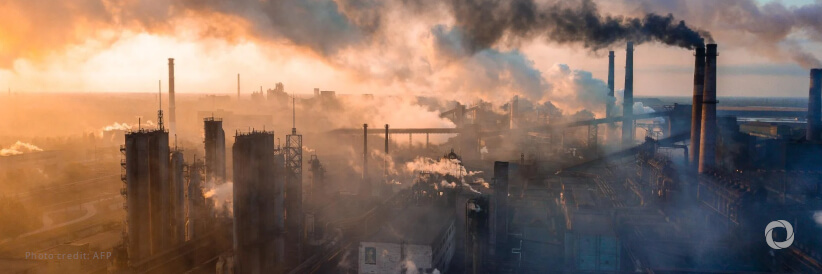Preliminary monitoring of the conflict in Ukraine points to significant impacts on urban and rural environments that could leave the country and region with a toxic legacy for generations to come, according to initial impact monitoring conducted by the United Nations Environment Programme (UNEP) and partner organizations.
The full range and severity of consequences will require verification and assessment, although thousands of possible incidents of air, water, and land pollution and the degradation of ecosystems, including risks to neighboring countries, have already been identified.
UNEP, the environment authority within the UN system, is supporting the Government of Ukraine on remote environmental impact monitoring and is preparing to undertake field-level impact assessments – expected to be a colossal task given the scale and geographical spread of reported incidents.
Support to disaster- and conflict-affected Member States and regions is core to UNEP’s mandate of delivering technical assistance and environmental governance support that keeps the state of the world’s environment under constant review.
Over the past twenty years, UNEP has conducted multiple conflict-related impact assessments, including in Afghanistan, Colombia, DR Congo, Kosovo, the Western Balkans, Iraq, Lebanon, the occupied Palestinian territories, Somalia, South Sudan, and Sudan.
The organization has already conducted an initial scoping visit to Ukraine, in support of the UN Resident Coordinator and at the request of Ukrainian authorities and is mobilizing more support to help assess the broad range of environmental impacts.
“The mapping and initial screening of environmental hazards only serve to confirm that war is quite literally toxic,” said UNEP Executive Director Inger Andersen. “The first priority is for this senseless destruction to end now. The environment is about people: it’s about livelihoods, public health, clean air and water, and basic food systems. It’s about a safe future for Ukrainians and their neighbors, and further damage must not be done.”
“Ukraine will then need huge international support to assess, mitigate and remediate the damage across the country, and alleviate risks to the wider region,” she added.
As key donors, agencies, and the Member States meet in Lugano, Switzerland, this week to discuss Ukraine’s reconstruction, the United Nations’ top official in Ukraine, Osnat Lubrani, stressed that “restoring Ukraine’s environment must be up at the top of the agenda.”
“Millions of displaced Ukrainians need a safe and healthy environment to come home to if they are expected to be able to pick up their lives. As soon as the fighting ends, and it must end soon, a colossal clean-up operation must be supported,” said Lubrani, the UN’s Resident Coordinator in Ukraine.
According to UNEP and partner data, the conflict has seen damage across many regions of the country, with incidents at nuclear power plants and facilities, energy infrastructure, including oil storage tankers, oil refineries, drilling platforms, and gas facilities and distribution pipelines, mines and industrial sites and agro-processing facilities.
The result has been multiple air pollution incidents and potentially serious contamination of ground and surface waters.
Water infrastructure, including pumping stations, purification plants, and sewage facilities, has also suffered significant damage, and multiple industrial facilities, warehouses, and factories have been damaged, some storing a range of hazardous substances ranging from solvents to ammonia and plastics.
Hazardous substances have also been released from explosions in agro-industrial storage facilities, including fertilizer and nitric acid plants. There are also reports of the targeting of several large livestock farms, where livestock carcasses pose a further public health risk.
In many urban areas, the clean-up of destroyed housing will bring its own challenges, with debris likely to be mixed with hazardous materials, particularly asbestos. Satellite imagery has also shown a significant increase in fires in various nature reserves and protected areas, as well as forested areas.
Furthermore, pollution from the extensive use of weapons including in populated areas and the large volumes of military waste, including destroyed military vehicles, creates a major clean-up challenge.

